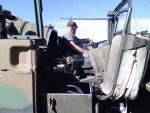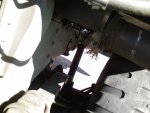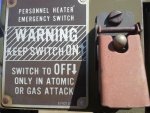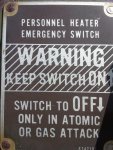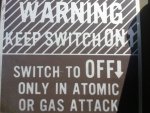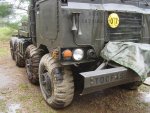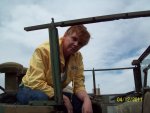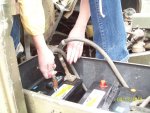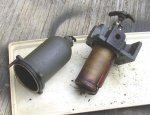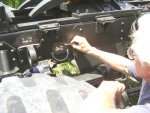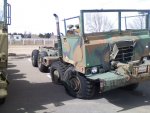As you can see in the "horns" picture above a couple of posts ago, I have taken some liberties when it comes to the head light placements. The original, as delivered from Ford, had the lights in the cab with or without the winch except for the blackout driving light, which was positioned higher up and to the outside for winch models.
The bumper mounted light clusters all came later as an MWO and some were not moved for years, judging from some later pictures I have seen.
The only variant "qualified" to swim was the 656 cargo version and the space between the cab and bumper was filled with polyurethane for buoyancy. For my xm757, I removed that, IMHO, ugly decking, covering the space between the cab and bumper.
If you calculate the buoyancy created by the boxy cab, you'll find that it is just enough to keep the 12,000 lb front end above water. The 656 also had the space between the windshield stowage box and cab filled with polyurethane.
The larger battery box also came later, as well as a muffler. Don't know if all changes came on the same MWO, there is only one MWO# on a tag by the glove compartment on my truck.
It's more efficient to keep the batteries next to the starter than having them 5-6 ft away. On the 757, the new battery box was placed on the dromedary platform behind the cab. I'm sticking with the original design and two batteries easily crank the engine. The cranking amperage under normal conditions is about 250 amps by a measurement I made using a shunt, however, the engine starts so easily (within a couple of seconds) that the peak amperage may have been higher. Also, the -2 engine has a higher capacity oil pump and there is good oil pressure after about 7-8 seconds even after the engine has been sitting for a week or so.
Think of any problem or drawback found on the deuce or 5-ton from the sixties and you'll find an improvement on these trucks.
The Pershing people seems to be an exclusive bunch and they rarely talk about the trucks, but I'll pass on questions if you like...
![Thumbs Up [thumbzup] [thumbzup]](https://www.steelsoldiers.com/images/smilies/icon_smile_thumzup.gif)



